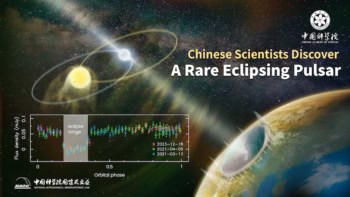American astronomers have picked up radio waves from a 'brown dwarf' - an object that is bigger than a planet but smaller than a star - for the first time. Edo Berger of the California Institute of Technology and colleagues detected the surprising signal from a nearby brown dwarf known as LP944-20 (E Berger et al 2001 Nature 410 338). The discovery could provide important insights into the nature of these mysterious bodies.

LP944-20 came to the attention of Berger’s team after the space-based Chandra X-ray Observatory detected a burst of X-rays from the brown dwarf. Investigating the object further with the Very Large Array telescope in New Mexico, Berger and colleagues found that it also emits an unexpectedly intense radio signal – around 20 000 times stronger than theory predicts. This posed questions about the power sources responsible for the radiation.
Brown dwarfs are not true stars because they are not massive enough to kickstart the burning of hydrogen in their cores. But at over 12 times the mass of Jupiter, they can fuse hydrogen into deuterium, although this energy source peters out after about 10 million years. LP944-20 is thought to be much older than this, suggesting the radio waves have a different energy source.
Synchrotron radiation is a likely candidate for the brown dwarf’s battery. As electrons spiral around a star’s atmosphere under the influence of its magnetic field, they release synchrotron radiation at radio wavelengths. When the electrons reach the outer layer of the star’s atmosphere – the corona – their energy is converted into heat and emitted as X-rays. This physical process leads to a remarkably close and predictable relationship between X-ray and radio emissions from individual stars, including the Sun. But LP944-20 does not fit into this model because of the imbalance in its radio and X-ray emissions.
Berger and co-workers believe that the strong radio signal from LP944-20 could best be explained by it having a very weak magnetic field. Electrons circulating in a weak field would travel more slowly and spend more time emitting synchrotron radiation – resulting in a disproportionately intense signal. When the electrons finally reach the corona, they would have less energy to contribute to the X-ray emission process, and this would explain the relatively dim X-ray emission.



